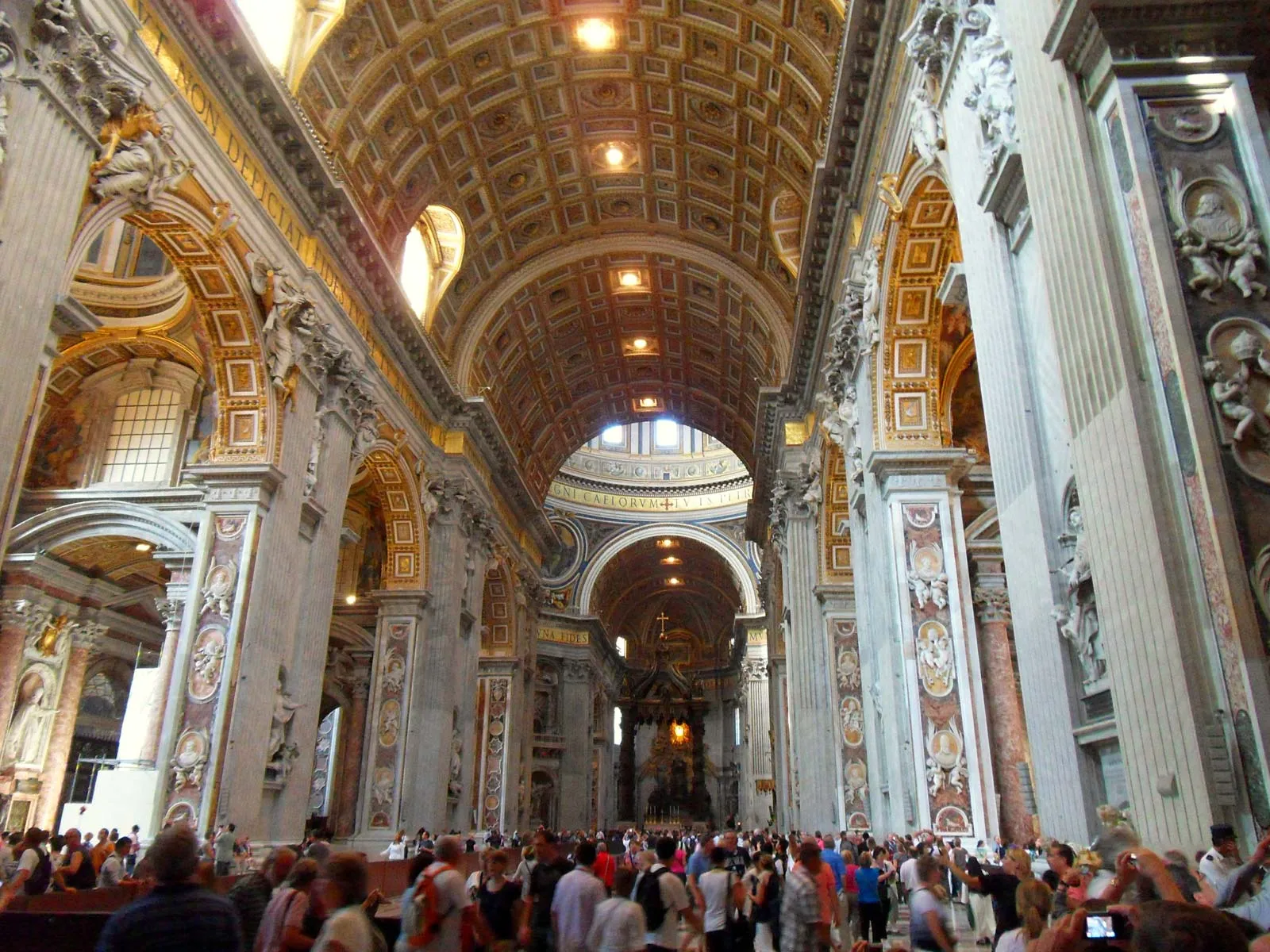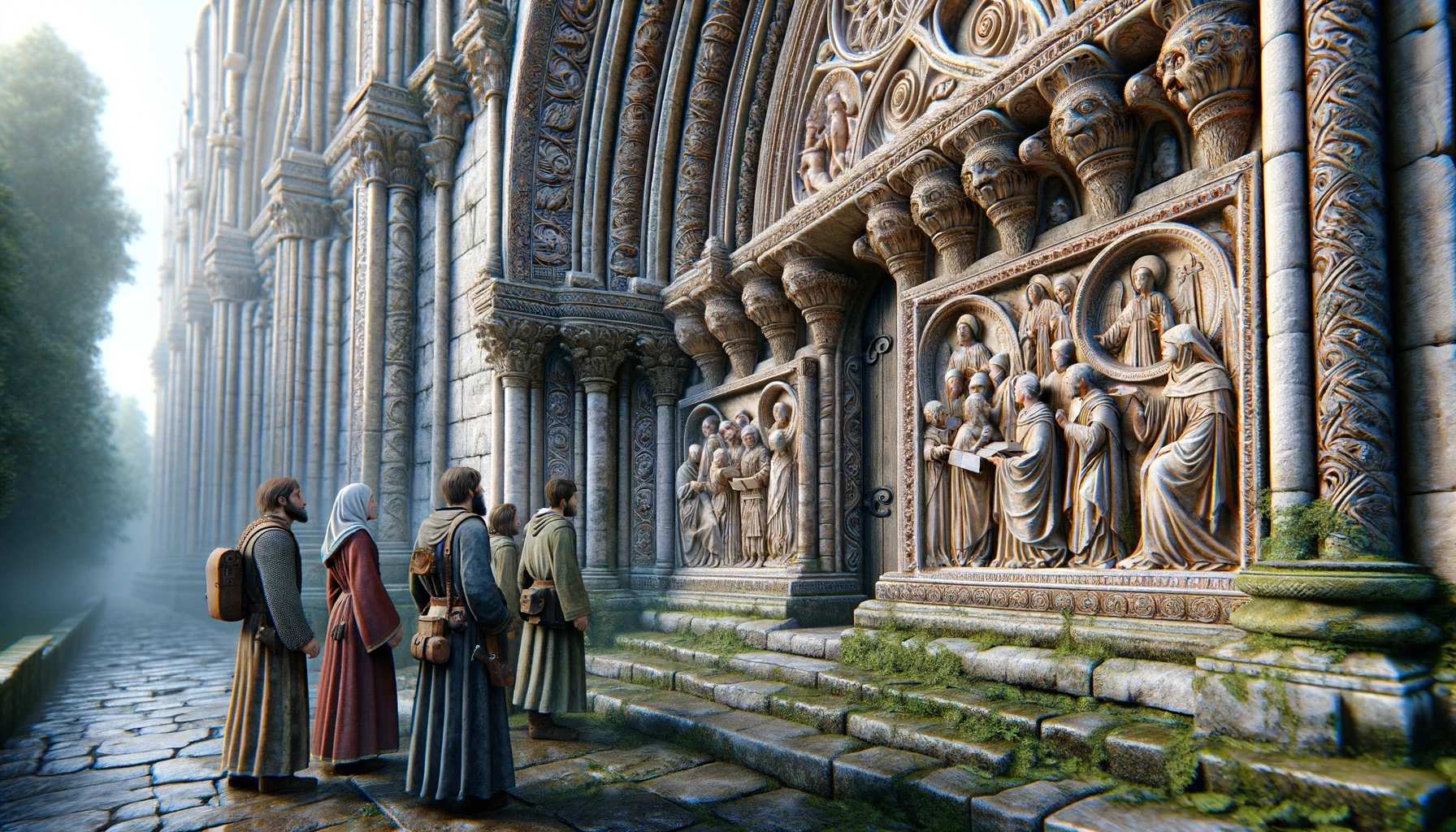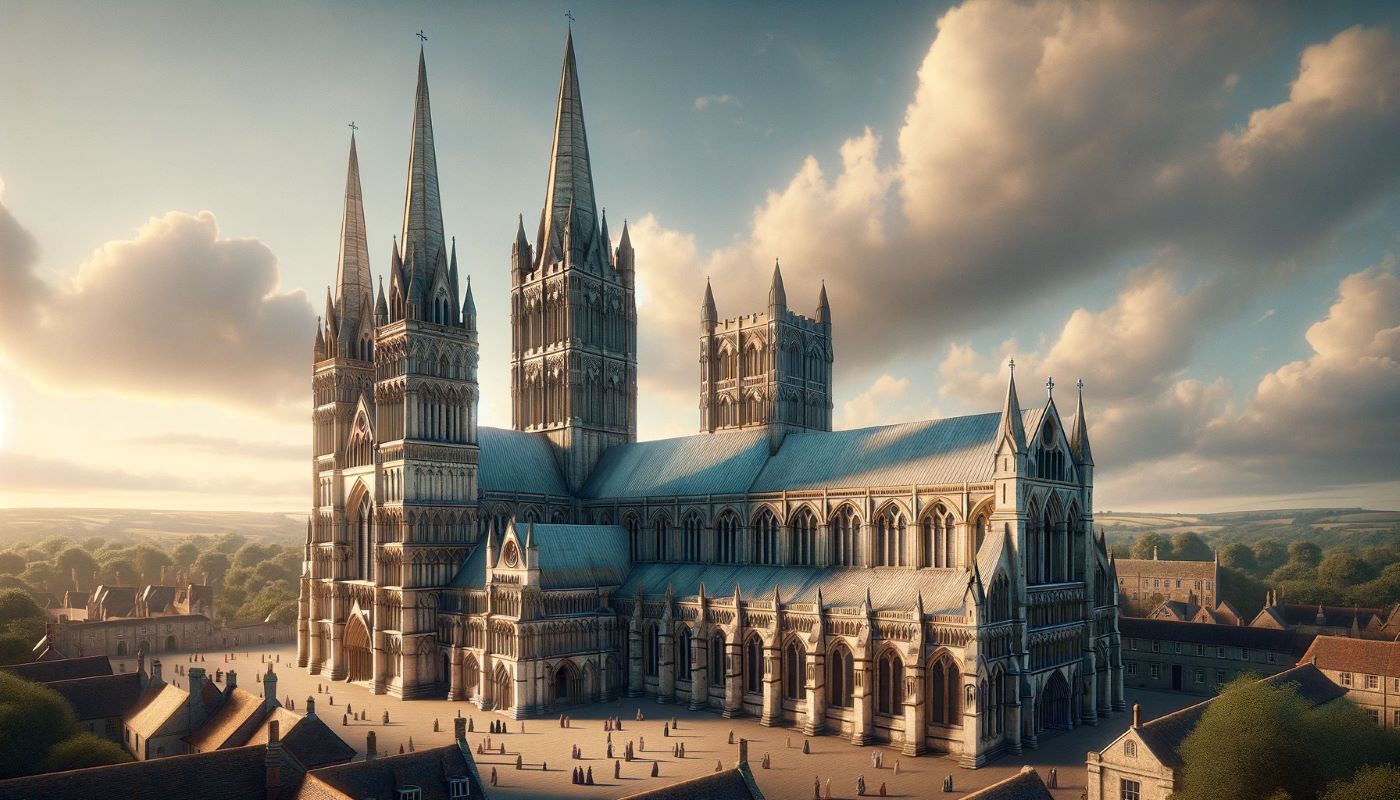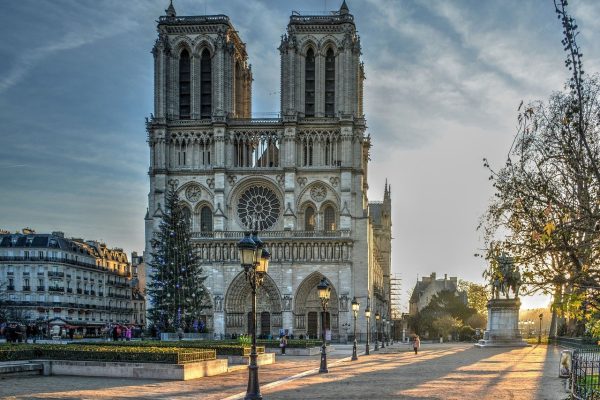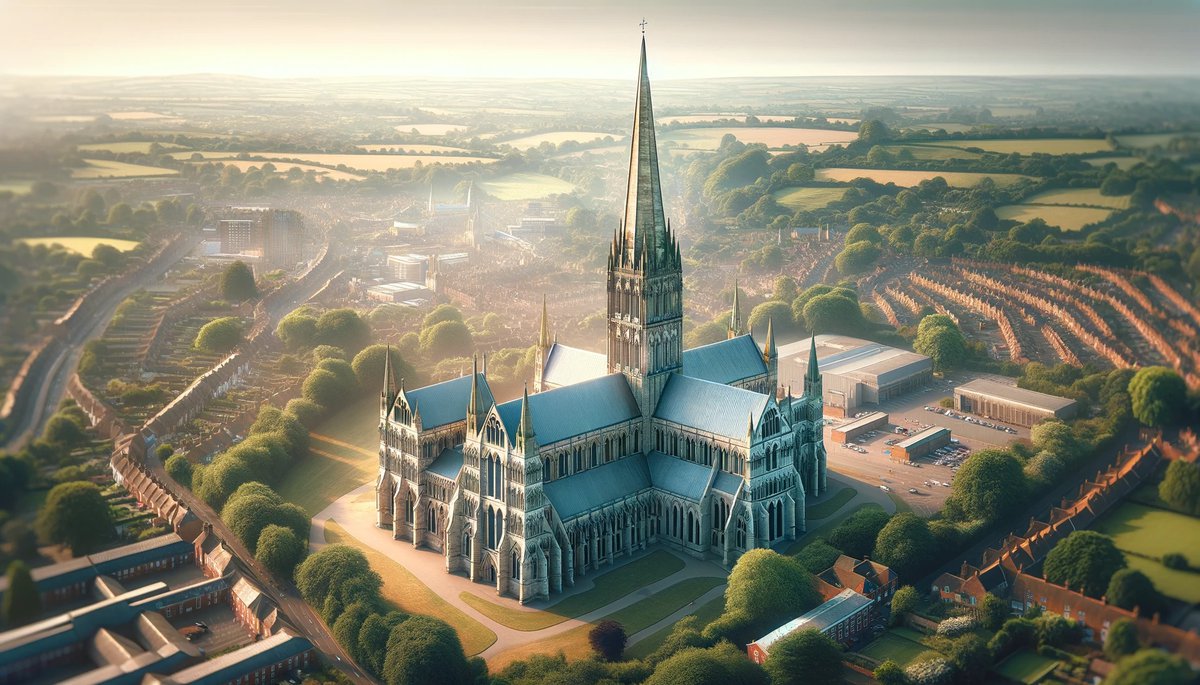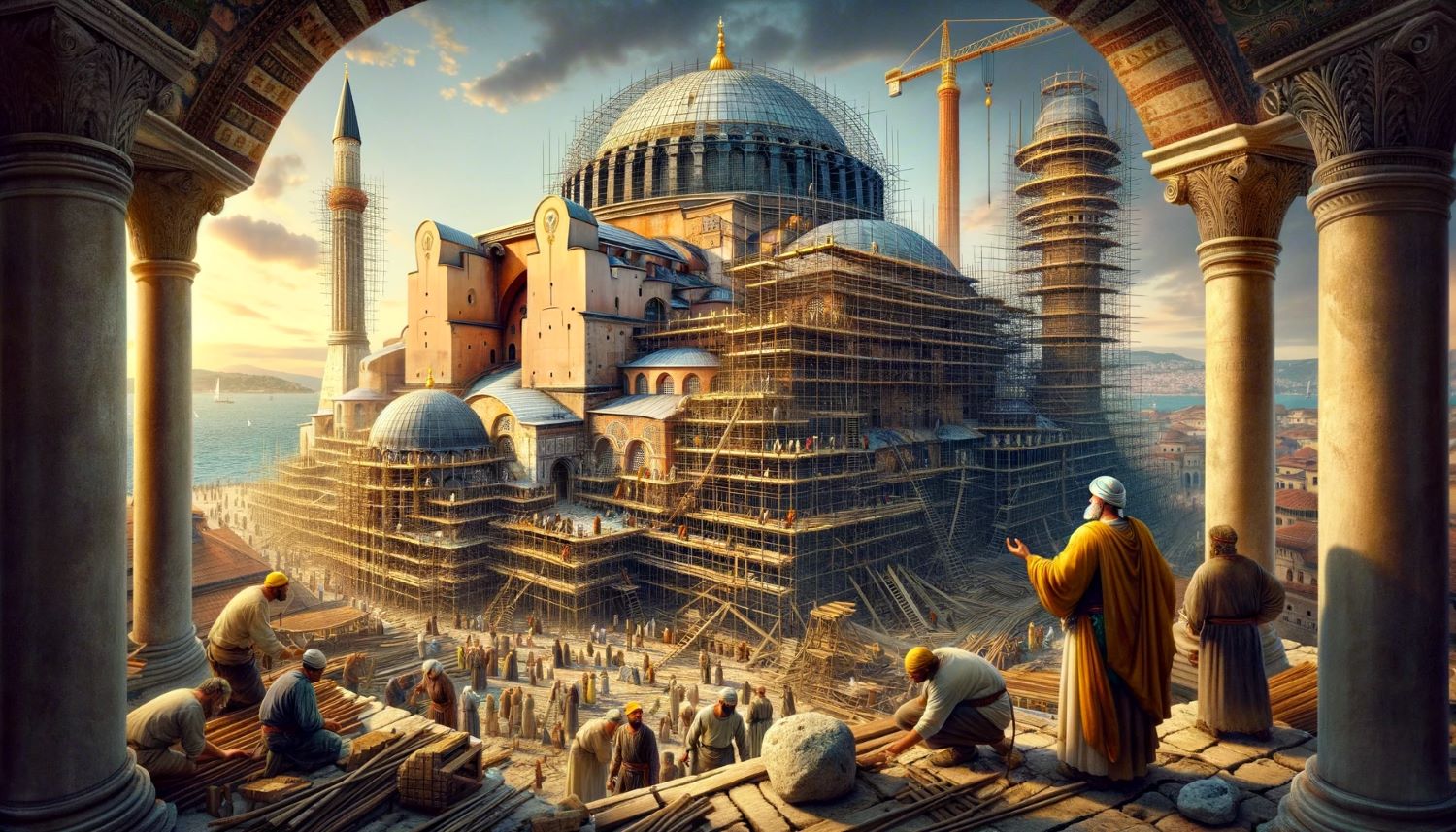Home>Arts and Culture>In Which Architectural Style Was The Cathedral Complex At Pisa Created?
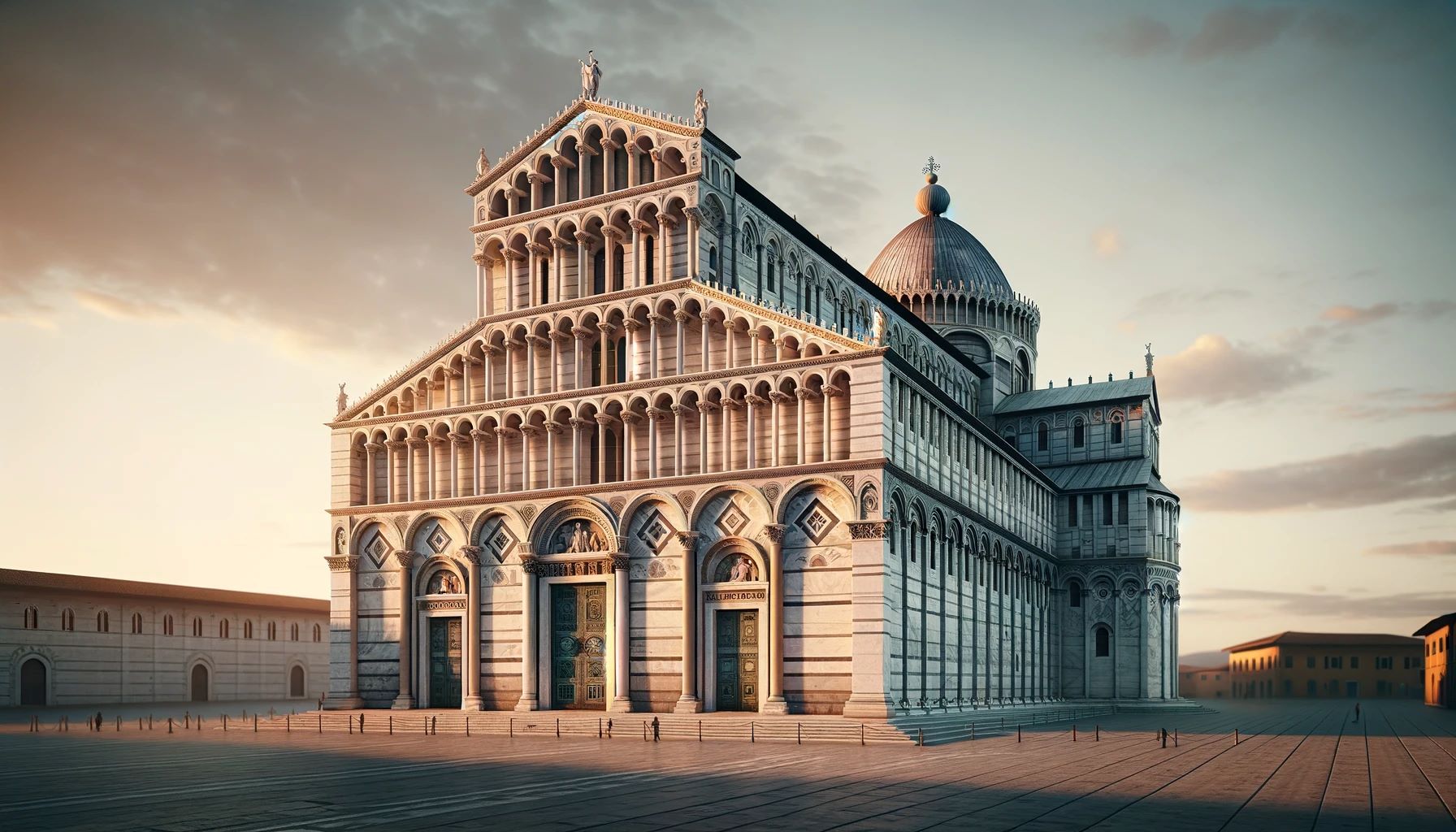

Arts and Culture
In Which Architectural Style Was The Cathedral Complex At Pisa Created?
Published: February 17, 2024
Ericka Andersen, an editor at Christian.net, expertly merges digital strategy with content creation, focusing on faith and societal issues. Her communication skills enhance the platform's engaging narratives, fostering meaningful dialogue on belief's impact on society.
Discover the architectural style of the Cathedral Complex at Pisa and its significance in arts and culture. Explore the history and influence of this iconic landmark.
(Many of the links in this article redirect to a specific reviewed product. Your purchase of these products through affiliate links helps to generate commission for Christian.net, at no extra cost. Learn more)
Table of Contents
Introduction
The Cathedral Complex at Pisa stands as a testament to the ingenuity and artistry of the architects and artisans who contributed to its creation. This magnificent complex, located in the heart of Pisa, Italy, is renowned for its architectural splendor and historical significance. The complex comprises the Pisa Cathedral, the Pisa Baptistery, the Leaning Tower of Pisa, and the monumental Camposanto Monumentale, all of which are prime examples of medieval architecture and design.
The Cathedral Complex at Pisa holds a revered place in the annals of architectural history, drawing visitors from around the globe to marvel at its grandeur and explore the rich cultural tapestry it represents. Each structure within the complex exudes a distinct charm and character, reflecting the artistic and cultural influences of the era in which they were built. From the ornate façade of the cathedral to the graceful curves of the baptistery and the iconic lean of the Leaning Tower, every element of the complex tells a compelling story of innovation and craftsmanship.
As we delve into the architectural marvels of the Cathedral Complex at Pisa, we embark on a journey through time, unraveling the intricate details of its construction and the cultural milieu that shaped its distinctive features. This exploration will shed light on the Romanesque architectural style that permeates the complex, offering insights into the influences and characteristics that define its enduring allure. Join us as we unravel the mysteries and marvels of this iconic complex, delving into the historical backdrop and architectural splendor that continue to captivate and inspire visitors to this day.
Historical Background of the Cathedral Complex at Pisa
The historical roots of the Cathedral Complex at Pisa run deep, intertwining with the rich tapestry of Pisan history and the cultural heritage of medieval Italy. The construction of the complex commenced in the 11th century, marking a pivotal period in the evolution of Pisa as a prominent maritime republic and a hub of artistic and architectural innovation.
The Pisa Cathedral, dedicated to the Assumption of the Virgin Mary, stands as the focal point of the complex, with its construction initiated in 1063 under the patronage of the Pisan archbishop, Buscheto. The cathedral's design reflects the burgeoning influence of Romanesque architecture, characterized by its robust forms, rounded arches, and decorative arcading. The cathedral's construction spanned several decades, with subsequent modifications and embellishments contributing to its grandeur.
Adjacent to the cathedral lies the Pisa Baptistery, a circular structure renowned for its exquisite acoustics and elegant Romanesque design. Its construction began in the 12th century, and its ornate pulpit, sculpted by Nicola Pisano, stands as a testament to the fusion of artistic prowess and religious symbolism.
The Leaning Tower of Pisa, an iconic symbol of architectural audacity, was conceived as the freestanding campanile of the cathedral. Its construction commenced in 1173 and was fraught with engineering challenges, leading to the distinctive lean that has captivated visitors for centuries.
The final component of the complex, the Camposanto Monumentale, or monumental cemetery, was constructed in the 13th century, featuring a cloistered design and housing a collection of remarkable frescoes.
The historical backdrop of the Cathedral Complex at Pisa is steeped in the triumphs and tribulations of the Pisan Republic, reflecting the city's maritime prowess, cultural exchange, and artistic patronage. The complex stands as a testament to the enduring legacy of Pisa, encapsulating the spirit of innovation and artistic expression that defined the medieval era.
As we delve into the architectural splendor of the Cathedral Complex at Pisa, we unravel a narrative of cultural dynamism and artistic fervor, offering a glimpse into the historical forces that shaped its creation and enduring allure.
Romanesque Architecture in Pisa
The Romanesque architecture that permeates the Cathedral Complex at Pisa reflects a pivotal period in the evolution of architectural styles, marking a transition from the preceding Byzantine and Early Christian influences to the burgeoning Gothic aesthetic. This architectural style, prevalent during the 11th and 12th centuries, is characterized by its robust forms, rounded arches, and decorative arcading, embodying a sense of solidity and grandeur.
The Pisa Cathedral, a quintessential example of Romanesque architecture, showcases the characteristic elements of this style. Its façade, adorned with intricately carved columns and ornate sculptural reliefs, exudes a sense of timeless elegance. The expansive interior of the cathedral features a nave and aisles delineated by sturdy columns and rounded arches, creating a harmonious and imposing space that embodies the essence of Romanesque design principles.
Adjacent to the cathedral, the Pisa Baptistery stands as a testament to the mastery of Romanesque architecture. Its imposing form, crowned by a conical dome, emanates a sense of solemnity and grace. The exterior of the baptistery is embellished with blind arcades and sculptural details, showcasing the intricate craftsmanship that defined the Romanesque aesthetic.
The Leaning Tower of Pisa, although renowned for its structural anomaly, also embodies the Romanesque style in its architectural elements. The tiers of arched colonnades and the robust, cylindrical form of the tower exemplify the enduring appeal of Romanesque design, even as the unintended lean captures the imagination of visitors from around the world.
The Camposanto Monumentale, with its cloistered design and elegant arcades, further exemplifies the Romanesque architectural influences that permeate the Cathedral Complex at Pisa. The interplay of light and shadow within the cloistered walkways and the graceful arches evoke a sense of tranquility and architectural harmony, underscoring the enduring legacy of Romanesque design principles.
The Romanesque architecture of the Cathedral Complex at Pisa stands as a testament to the artistic and cultural milieu of medieval Italy, encapsulating the spirit of innovation and creative expression that defined the era. Its enduring allure continues to captivate visitors, offering a glimpse into a bygone epoch of architectural splendor and timeless beauty.
Influences and Characteristics of the Cathedral Complex at Pisa
The Cathedral Complex at Pisa stands as a testament to the convergence of diverse cultural influences and architectural ingenuity, shaping its distinctive characteristics and enduring allure. Influenced by the prevailing artistic and religious currents of the medieval era, the complex embodies a fusion of Romanesque, Byzantine, and Islamic architectural elements, resulting in a harmonious synthesis of styles that captivates visitors to this day.
The architectural influences evident in the Cathedral Complex at Pisa are a testament to the city's role as a vibrant hub of cultural exchange and artistic patronage during the medieval period. The Romanesque architectural style, characterized by its robust forms and rounded arches, permeates the complex, reflecting the prevailing aesthetic sensibilities of the era. This style, with its emphasis on solidity and grandeur, is exemplified in the imposing façade of the Pisa Cathedral, the graceful curves of the Pisa Baptistery, and the sturdy yet elegant form of the Leaning Tower of Pisa.
Furthermore, the complex bears the imprint of Byzantine and Islamic influences, manifested in the intricate decorative motifs and geometric patterns adorning the structures. The interplay of arches, columns, and ornamental details reflects the cross-cultural exchanges that defined the architectural landscape of medieval Pisa, infusing the complex with a sense of cosmopolitan elegance and artistic eclecticism.
The Cathedral Complex at Pisa also embodies the characteristics of a maritime republic, with its architectural elements echoing the city's maritime prowess and commercial prosperity. The use of imported marble and ornate embellishments, sourced from distant lands through Pisa's extensive trade networks, underscores the cosmopolitan nature of the complex, serving as a testament to the city's global connections and cultural cosmopolitanism.
The enduring allure of the Cathedral Complex at Pisa lies in its ability to encapsulate the spirit of cultural convergence and artistic innovation, offering visitors a glimpse into a bygone era of architectural splendor and creative dynamism. As the sun casts its golden glow upon the weathered façades and time-worn stones of the complex, it beckons travelers to immerse themselves in the rich tapestry of history and artistry, inviting them to partake in a timeless journey through the architectural marvels of medieval Italy.
Conclusion
In conclusion, the Cathedral Complex at Pisa stands as a living testament to the architectural ingenuity, cultural dynamism, and artistic fervor that defined medieval Italy. From the robust forms of Romanesque architecture to the intricate decorative motifs influenced by Byzantine and Islamic traditions, the complex embodies a harmonious synthesis of diverse influences, reflecting the cosmopolitan nature of Pisa as a maritime republic.
As visitors traverse the hallowed halls of the Pisa Cathedral, gaze in awe at the graceful curves of the Pisa Baptistery, and marvel at the iconic lean of the Leaning Tower of Pisa, they are transported to an era of unparalleled creativity and craftsmanship. The interplay of light and shadow within the cloistered walkways of the Camposanto Monumentale evokes a sense of tranquility and architectural harmony, inviting contemplation and reflection.
The historical backdrop of the Cathedral Complex at Pisa, intertwined with the triumphs and tribulations of the Pisan Republic, serves as a poignant reminder of the enduring legacy of Pisa, encapsulating the spirit of innovation and artistic expression that defined the medieval era. The complex stands as a beacon of cultural convergence, inviting visitors to immerse themselves in the rich tapestry of history and artistry, offering a glimpse into a bygone epoch of architectural splendor and timeless beauty.
As the sun casts its golden glow upon the weathered façades and time-worn stones of the complex, it beckons travelers to partake in a timeless journey through the architectural marvels of medieval Italy. The Cathedral Complex at Pisa continues to captivate and inspire, inviting all who behold its grandeur to embark on a transcendent odyssey through the annals of architectural history, where the echoes of the past resonate with the enduring allure of timeless beauty.
